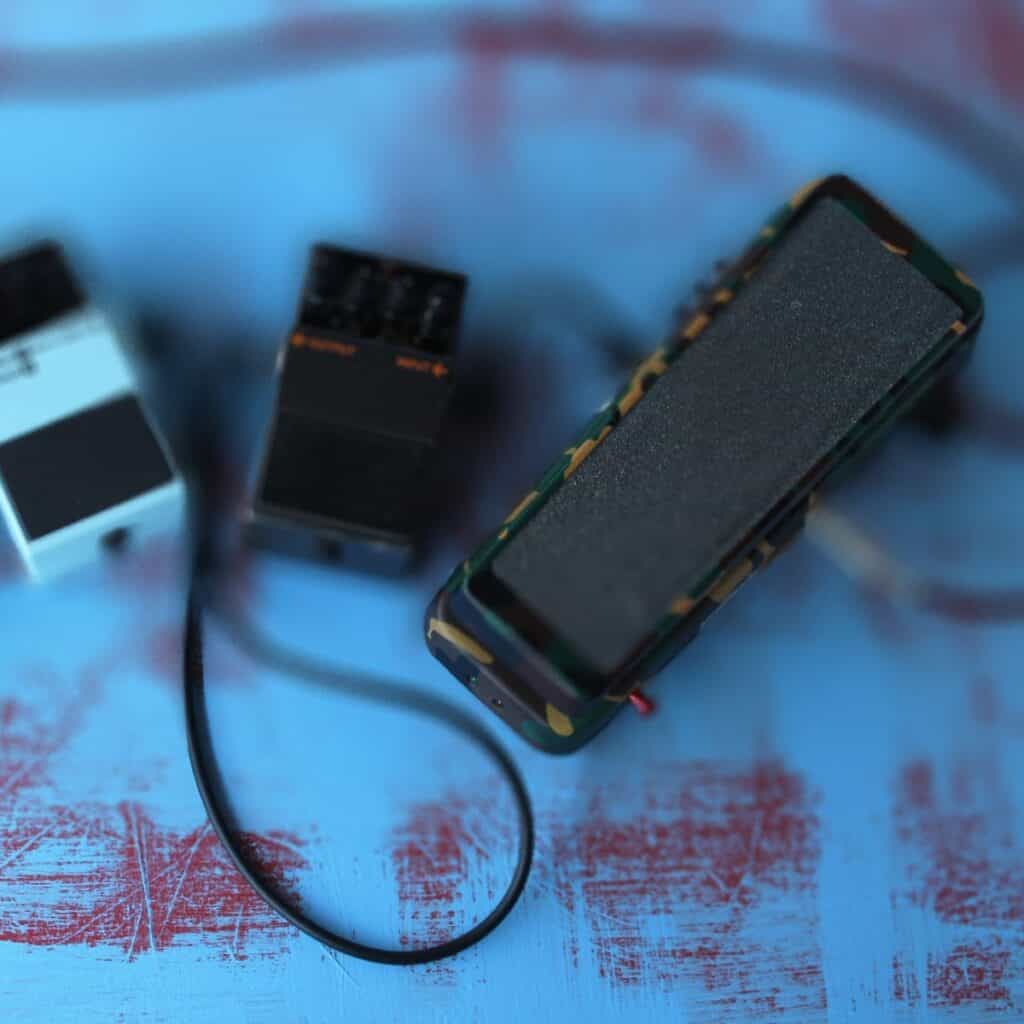You’re looking down at the volume knob on your guitar, and then over to your volume pedal. They both do “volume,” right? But does it matter which one you use?
The guitar’s volume knob controls the output volume into the signal chain. You change it by using your hand, which you might need for picking. A volume pedal is an external pedal that controls the signal volume from where it’s placed in the chain and is foot operated.
In this article, I’ll explain WHY this matters and why you should consider using one over the other.

What’s a Volume Pedal?
What it Does
A volume pedal is a fancy-schmancy expression pedal that can be used to create some sweet, sweet sounds. It’s like a volume knob on steroids – it can be pushed down or rocked back to control the signal from your guitar to your amp. It can be placed at the start of the chain to act like a regular ol’ volume knob, or later on in the chain to act as a master volume control.
Why You Need One
If you’re looking to get the most out of your sound, then you need a volume pedal! It’ll help you create some beautiful swells and sweeps, and it’ll also help you avoid the dreaded “tone suck” – when the treble gets cut out, leaving you with a muddy sound. Plus, you can get either an active or passive volume pedal, depending on your needs.
Active volume pedals have a buffer that preserves the signal strength coming from your guitar, while passive volume pedals are simpler and just act like a regular volume knob. So, if you’re looking to get the most out of your sound, then you need a volume pedal!
Comparing Passive and Active Volume Pedals
Passive Volume Pedals
- Ain’t got no buffer, so you’ll be losin’ those high-end frequencies, boo
- No need for power, just plug ‘n’ play
- Low-impedance and high-impedance options, depending on your pickups
- Wider sweep, but less sensitive
- Cheaper than active volume pedals
Active Volume Pedals
- Got a buffer, so your tone won’t sound dull
- Need a power supply to get goin’
- Suitable for both active and passive pickups
- Narrower sweep, but more sensitive
- Cost more than passive volume pedals
Different Uses of Volume Pedals
Using it Like a Guitar’s Volume Knob
- If you place the volume pedal right after your guitar and before any other pedals, it’ll act just like your guitar’s volume knob.
- This is great if your guitar’s volume control is hard to reach, like on a Les Paul or some modern guitars.
- Stratocasters and Telecasters usually have more accessible volume controls, but having a volume pedal is still handy if you don’t have free hands.
- Active volume pedals work best for this, but passive ones can result in a loss of high-end frequencies.
Controlling the Master Volume
- If you place your volume pedal at the very end of your signal chain, it’ll act as a master volume control.
- This means the gain won’t be affected when you use the pedal.
- You can place it either before or after your reverb and delay pedals:
– Before: you’ll retain the trails from the ambient effects.
– After: the ambient effects will be cut off completely when you activate the volume pedal (similar to a noise gate).
Creating Volume Swells
- Volume swells can be created with a volume pedal.
- This works best when you place the pedal after your drive pedals, or in your effects loop if you’re using your amp for the gain.
- Volume swells remove the attack and create an interesting effect.
- To perform a swell with a volume pedal:
– Turn the volume pedal all the way down (tilt it forwards).
– Play a note/chord.
– Depress the volume pedal.
Cranking a Tube Amp at Lower Volume
- Some players use volume pedals through a tube amp when playing at home, so they can get a “cranked” effect without the volume being too loud.
- This can be useful, but a better option is to use a power attenuator instead.
Where Should I Put My Volume Pedal?
You can put your volume pedal anywhere in your chain, that’s a big advantage over using your volume knob which can only change the volume going into the chain.
But the most common spots are either at the very start or after your gain pedals but before your reverb and delay. Placing it at the start of the chain will affect your gain, but if you put it after your drive pedals it’ll act as a level control.
Organizing Your Pedalboard
Organizing your pedalboard can be a real pain, but don’t worry – we’ve got you covered! Check out our ultimate guide to designing a pedalboard, which includes all the equipment you need and a step-by-step formula to get you set up in no time.
Conclusion
Using a volume pedal instead of a volume knob on your guitar can open up a world of creative possibilities.
You can more easily create volume swells, add a gradual boost to your signal, mute your sound quickly, and control your volume with your FOOT instead of your picking hand.
Plus, it’s much easier to use while playing, especially if you have a guitar with awkwardly positioned pots! So don’t be afraid to give it a try – just remember to use your pedal with PEDAL-ity!
I'm Joost Nusselder, the founder of Neaera and a content marketer, dad, and love trying out new equipment with guitar at the heart of my passion, and together with my team, I've been creating in-depth blog articles since 2020 to help loyal readers with recording and guitar tips.

